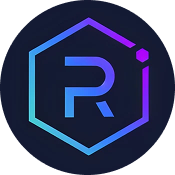In the bustling universe of decentralized finance, choosing the right platform can feel like navigating a maze of options. Yearn Finance and Raydium stand out as two of the most influential protocols, each with its unique approach to maximizing yields and enabling seamless trading. While both serve the DeFi community, their core functionalities, architecture, and user experiences vary significantly, making it essential for investors and enthusiasts to understand these differences thoroughly. This comparison peels back the layers to reveal how each platform operates, their strengths, limitations, and ideal use cases, equipping you with the knowledge to make informed decisions in your DeFi journey.
Short on time? Jump to Yearn Finance vs Raydium Comparison
Understanding Yearn Finance and Raydium ?
Yearn.Finance, launched in 2020 by Andre Cronje, is a pioneering DeFi aggregator built on Ethereum. Its primary goal is to optimize yield farming by automatically moving funds across various protocols like Aave, Compound, and Curve to secure the highest returns. Users deposit assets into vaults, which then deploy these funds into different strategies, continuously seeking the best opportunities for profit. Yearn’s architecture emphasizes automation, security, and governance, with the YFI token enabling community-driven decision-making. Over time, Yearn has expanded its multi-chain capabilities and introduced innovations like YearnV3, aiming for greater decentralization and flexibility.
Raydium, on the other hand, is a Solana-based decentralized exchange (DEX) that combines automated market maker (AMM) functionality with liquidity provision and yield-generating features. Launched in 2021, it leverages Solana’s high throughput and low fees to facilitate fast, cost-effective trading. Raydium’s unique feature set includes support for liquidity pools, staking, and a suite of advanced tools like Burn and Earn, which promote liquidity lock-in and community engagement. Its V3 upgrade introduced revamped CPMM pools with integrated oracles, further enhancing trading efficiency and reliability. Raydium’s rapid growth is driven by Solana’s technical strengths and a vibrant memecoin ecosystem, making it a key player in the Layer 1 DeFi landscape.
While Yearn focuses on yield optimization through cross-protocol aggregation and vault strategies on Ethereum (and beyond), Raydium centers on providing a high-performance trading environment on Solana, complemented by liquidity incentives and cross-chain capabilities. Both platforms exemplify innovative DeFi solutions but cater to different user needs—Yearn for passive yield farming and multi-chain strategies, Raydium for active trading and liquidity provision within a fast, scalable blockchain ecosystem.
Understanding these foundational differences sets the stage to explore their technical architectures, key features, and the ecosystems they nurture. This comparison aims to clarify which platform aligns best with various investment strategies and operational preferences in the evolving DeFi landscape.
Key Differences Between Yearn Finance and Raydium
Primary Functionality
- Yearn Finance: Yearn Finance operates mainly as a yield aggregator, automating the process of finding and executing the most profitable strategies across multiple DeFi protocols. Its vaults and strategies are designed to maximize returns passively for users who deposit assets, emphasizing security and community governance. Yearn's focus is on automated profit optimization, reducing manual intervention and providing a diversified yield farming experience on Ethereum and other blockchains.
- Raydium: Raydium functions as an AMM-based DEX on Solana, facilitating fast, low-cost trading with liquidity pools and staking opportunities. It incorporates features like Burn and Earn, cross-chain transfers, and advanced trading tools, making it ideal for active traders and liquidity providers. Raydium’s architecture emphasizes high throughput, real-time swaps, and community-driven liquidity incentives, positioning it as a liquidity hub within the Solana ecosystem.
Underlying Blockchain
- Yearn Finance: Yearn operates primarily on Ethereum, leveraging its extensive DeFi ecosystem, but has expanded to other chains like Fantom and Arbitrum for increased scalability and options. Its reliance on Ethereum’s security model and widespread adoption makes it a robust choice for yield farmers seeking decentralized, composable strategies.
- Raydium: Raydium is built exclusively on Solana, a blockchain known for its high throughput and low latency. Solana’s architecture allows Raydium to offer near-instant transaction finality and minimal fees, which are critical for high-frequency trading and liquidity provisioning. This blockchain choice makes Raydium particularly attractive for users prioritizing speed and cost-efficiency.
User Experience and Interaction
- Yearn Finance: Yearn provides a streamlined, mostly passive experience where users deposit assets into vaults and let the protocol handle yield optimization. Interaction is mostly through wallet integrations, governance participation, and strategy selection, appealing to users who prefer a hands-off approach and community governance models.
- Raydium: Raydium offers an active trading interface with real-time swaps, liquidity pool management, and staking. Its platform supports advanced features like charting, cross-chain transfers, and liquidity lock-in, catering to traders, liquidity providers, and DeFi enthusiasts who want an interactive experience.
Governance and Tokenomics
- Yearn Finance: Yearn’s governance revolves around the YFI token, which grants voting rights on platform upgrades, strategy approval, and protocol parameters. The tokenomics emphasize decentralization, with no initial token allocation for founders, encouraging community participation and proposal-driven improvements.
- Raydium: Raydium’s governance involves the RAY token, used for staking, liquidity incentives, and community proposals. Its tokenomics support liquidity mining and reward programs to foster ecosystem growth, with a focus on community engagement and platform expansion within Solana’s DeFi landscape.
Security and Risk Management
- Yearn Finance: Yearn prioritizes security through rigorous audits, modular architecture, and community oversight. Nevertheless, it has faced security incidents, such as the 2021 exploit, which prompted enhancements in security protocols and governance processes to mitigate risks associated with complex strategies.
- Raydium: Raydium emphasizes speed and real-time trading, with security measures like audits and bug bounty programs. Its reliance on Solana’s network security and dedicated development team aims to ensure safe liquidity operations, though the fast-paced environment requires continuous vigilance against exploits.
Yearn Finance vs Raydium Comparison
| Feature | ✅ Yearn Finance | ✅ Raydium |
|---|---|---|
| Core Function | Yield aggregator optimizing cross-protocol strategies on Ethereum and other chains. | Decentralized exchange providing fast trading and liquidity pools on Solana. |
| Blockchain Platform | Ethereum (main), with expansions to Fantom, Arbitrum, etc. | Solana, leveraging high throughput and low fees. |
| User Interaction | Passive deposit into vaults with governance participation. | Active trading, liquidity provision, staking, and cross-chain transfers. |
| Token Utility | YFI governs the platform, enabling proposals and voting. | RAY incentivizes liquidity, staking, and governance participation. |
| Security Focus | Modular, audit-driven with a focus on secure strategies. | Real-time trading security with audits and continuous updates. |
| Ideal Users | Long-term yield farmers seeking automated strategies across multiple chains. | Active traders and liquidity providers on Solana seeking high-speed transactions. |
Ideal For
Choose Yearn Finance: DeFi enthusiasts interested in passive yield farming, multi-chain strategies, and community governance.
Choose Raydium: Active traders, liquidity providers, and DeFi users prioritizing speed, low costs, and real-time trading features.
Conclusion: Yearn Finance vs Raydium
Yearn Finance and Raydium exemplify two distinct paradigms within DeFi—passive yield optimization versus active trading. Yearn’s strength lies in its ability to automate complex strategies across multiple chains, appealing to users with a long-term, hands-off investment approach. Its community-driven governance and modular architecture foster continuous innovation and security improvements, though it remains primarily Ethereum-centric.
Raydium, on the other hand, leverages Solana’s high-speed, low-cost infrastructure to facilitate rapid trading, liquidity provisioning, and cross-chain asset transfers. Its ecosystem thrives on community incentives like Burn and Earn and memecoin trading, making it particularly attractive for traders and liquidity providers seeking active participation. Both platforms are pushing the boundaries of DeFi, but choosing between them depends on your investment style, risk appetite, and preferred blockchain ecosystem.





